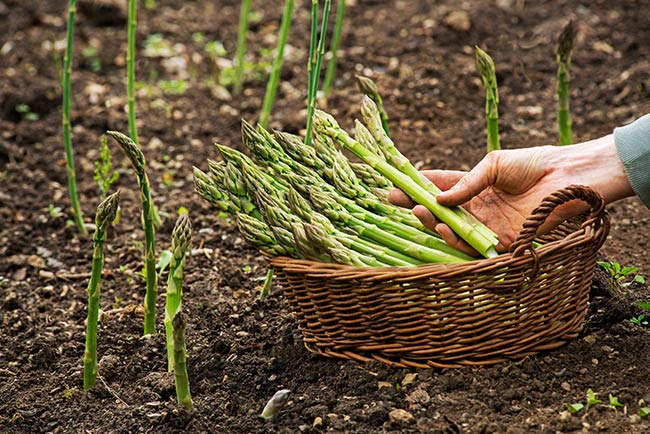How To Grow Asparagus

Make sure to like Living Green and Frugally on Facebook, Shop at amazon to help support my site and explore our PINTEREST BOARDS for innovative ways you can become self-sufficient.
Asparagus, with its tender spears and distinct flavor, is a favorite vegetable in many households. Growing your own asparagus can be a rewarding endeavor, providing you with a fresh and delicious crop for years to come.
While it requires patience and careful attention, the process of growing asparagus is relatively straightforward. In this guide, we’ll walk you through all aspects of cultivating asparagus, from selecting the right varieties to harvesting your bounty.
Selecting Varieties:
Before diving into the cultivation process, it’s essential to choose the right asparagus varieties for your garden. There are primarily two types of asparagus: green and purple. Some popular green varieties include Mary Washington, Jersey Knight, and UC 157. Purple varieties, such as Purple Passion, offer a unique color and flavor profile.
Soil Preparation:
Asparagus thrives in well-drained soil with a pH level between 6.5 and 7.5. Start by selecting a sunny spot in your garden with fertile, sandy loam soil. Before planting, amend the soil with compost or aged manure to improve its fertility and texture. Ensure that the soil is free from weeds and debris to give your asparagus plants the best start.
View this post on Instagram
Planting:
Asparagus is typically grown from crowns, which are one-year-old dormant plants with a network of roots. Plant your crowns in early spring, as soon as the soil is workable. Dig trenches that are 12-18 inches deep and 12-18 inches wide, spacing them about 18 inches apart. Place the crowns in the trenches, spreading out the roots, and cover them with 2-3 inches of soil. As the plants grow, gradually fill in the trenches until they are level with the soil surface.
Care and Maintenance:
Once your asparagus plants are established, they require minimal maintenance but regular care to thrive:
- Watering: Asparagus plants need consistent moisture, especially during the growing season. Water deeply once or twice a week, ensuring that the soil remains evenly moist but not waterlogged.
- Mulching: Apply a layer of mulch around the plants to conserve moisture, suppress weeds, and regulate soil temperature. Organic mulches like straw or shredded leaves work well for this purpose.
- Fertilizing: Asparagus is a heavy feeder and benefits from regular fertilization. Apply a balanced fertilizer high in nitrogen in early spring before spears emerge. Avoid high-nitrogen fertilizers once the spears start to grow, as this can lead to ferny growth instead of robust spears.
- Weed Control: Keep the area around your asparagus plants weed-free to prevent competition for nutrients and water. Hand-pulling weeds is the safest method to avoid damaging the shallow roots of the asparagus.
Harvesting:
Patience is key when it comes to harvesting asparagus. Avoid harvesting any spears during the first year to allow the plants to establish a strong root system. In the second year, you can harvest a few spears, but it’s best to wait until the third year for a full harvest.
To harvest asparagus, snap or cut the spears at ground level when they are 6-8 inches tall and before the tips start to open up. Harvest regularly but avoid over-harvesting, as this can weaken the plants over time. Once the harvesting season is over, allow the remaining spears to grow into fern-like foliage, which will help nourish the roots for the next season.
View this post on Instagram
Conclusion:
Growing asparagus requires patience and commitment, but the rewards are well worth the effort. By selecting the right varieties, preparing the soil properly, and providing adequate care, you can enjoy a bountiful harvest of fresh asparagus for years to come. Whether you’re a novice gardener or an experienced enthusiast, adding asparagus to your garden is sure to enhance your culinary adventures and delight your taste buds with its fresh, flavorful spears.